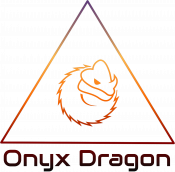In 1999, the world witnessed one of the most devastating nuclear accidents in modern history—not because of a reactor meltdown, but because of a fatal mistake made in a fuel processing plant. At the center of it was Hiromitsu Ouchi, a Japanese technician whose body endured radiation levels so extreme that his very DNA was destroyed. His case became known globally, not just for its horror, but for the difficult questions it raised about science, suffering, and medical responsibility.
☢️ The Tokaimura Nuclear Accident
On September 30, 1999, three technicians at the JCO nuclear fuel plant in Tokaimura, Japan, were manually mixing a uranium solution—using steel buckets, in violation of safety protocols. This triggered a nuclear chain reaction that released an intense burst of radiation.
Hiromitsu Ouchi, then 35 years old, stood closest to the tank. He was hit with an estimated 17 sieverts of radiation—far beyond the human threshold for survival. For perspective, 8 sieverts is typically fatal; Ouchi received more than double that amount in seconds.
🧬 “Losing DNA”: What Really Happened
Radiation at this level doesn’t just burn flesh—it rips apart cells at the genetic level.
- Ouchi’s white blood cell count dropped to zero.
- His chromosomes were shredded.
- His body could no longer regenerate tissue, heal wounds, or fight infection.
- Even stem cell treatments failed—his body rejected them because his DNA was too damaged to support life.
Although the phrase “the man who lost his DNA” is not scientifically literal, it accurately reflects his biological state: his genetic code was so catastrophically damaged that his body could no longer sustain life on its own.
🏥 Kept Alive for 83 Days
Doctors at the University of Tokyo Hospital did everything they could to keep Ouchi alive:
- He was given experimental stem cell transplants.
- He underwent numerous blood transfusions and skin grafts.
- Machines helped him breathe and circulate blood.
Despite this, his condition rapidly worsened. His skin peeled away. Organs began to fail. His body literally fell apart from within.
At one point, after regaining consciousness briefly, Ouchi reportedly begged the doctors:
“Please let me die… I can’t take it anymore.”
Yet, for ethical and legal reasons, his medical team continued treatment—resuscitating him even after three heart failures. He was kept alive for 83 days, until he finally died of multiple organ failure on December 21, 1999.
⚖️ The Ethical Aftershock
Hiromitsu Ouchi’s case became a flashpoint in discussions about:
- The limits of life support
- The morality of experimental treatment
- The right to die with dignity
Was it compassion or cruelty to keep him alive? Were doctors trying to save a life—or preserve a scientific case study?
The Tokaimura accident also triggered major reforms in Japan’s nuclear safety policies and highlighted serious flaws in corporate responsibility and training.
🕊️ A Tragic Legacy
Hiromitsu Ouchi’s story is more than a medical anomaly—it’s a haunting reminder of what can happen when protocols are ignored and technology outpaces ethics.
He did not “lose his DNA” in a literal sense—but his story illustrates what it means when the very blueprint of life is irreparably damaged.
He should be remembered not just as a victim of radiation, but as a symbol of human vulnerability, scientific responsibility, and the need for ethical boundaries in extreme medicine.
📲 Hashtags:
#HiromitsuOuchi #TokaimuraAccident #RadiationExposure #NuclearSafety #MedicalEthics#Bioethics #RightToDie #NuclearDisaster #ScienceAndHumanity
